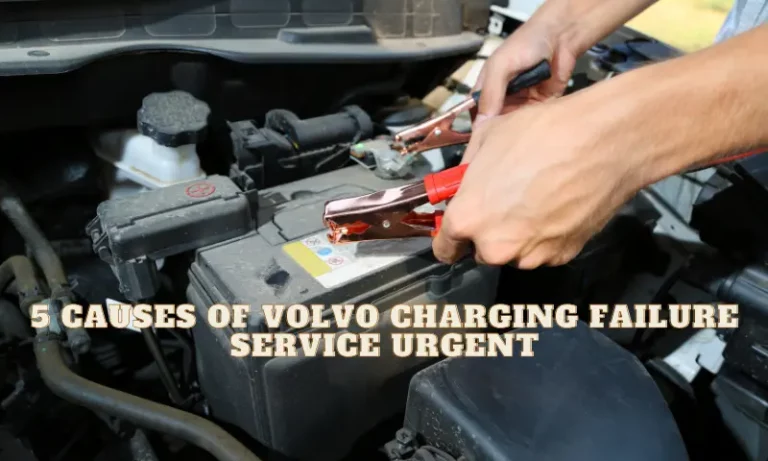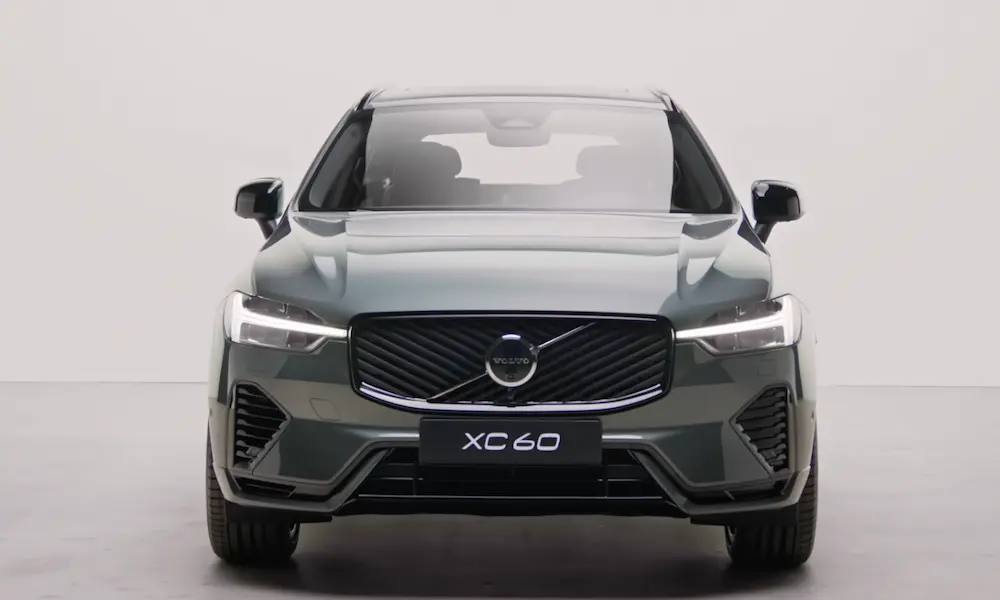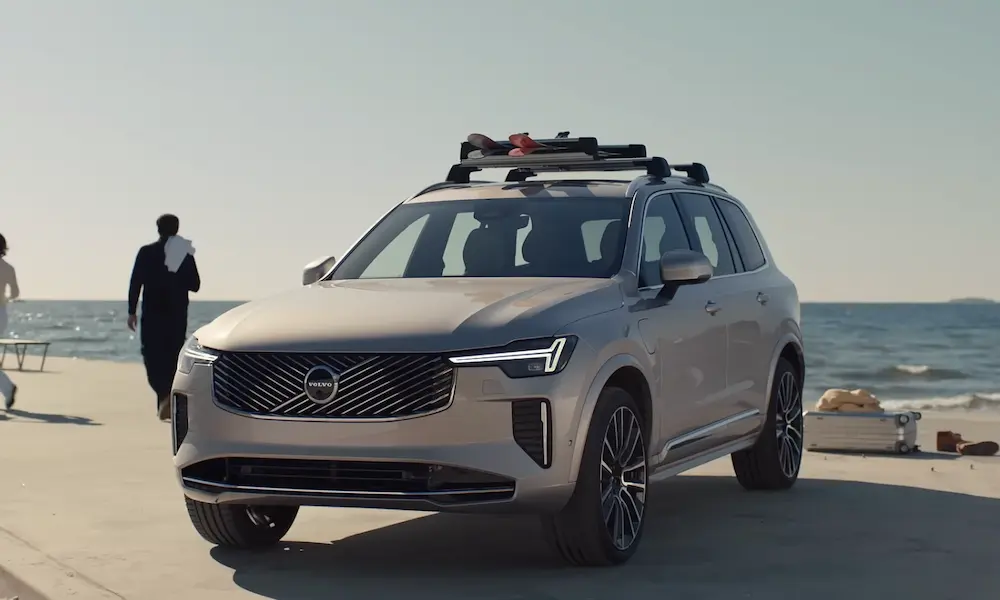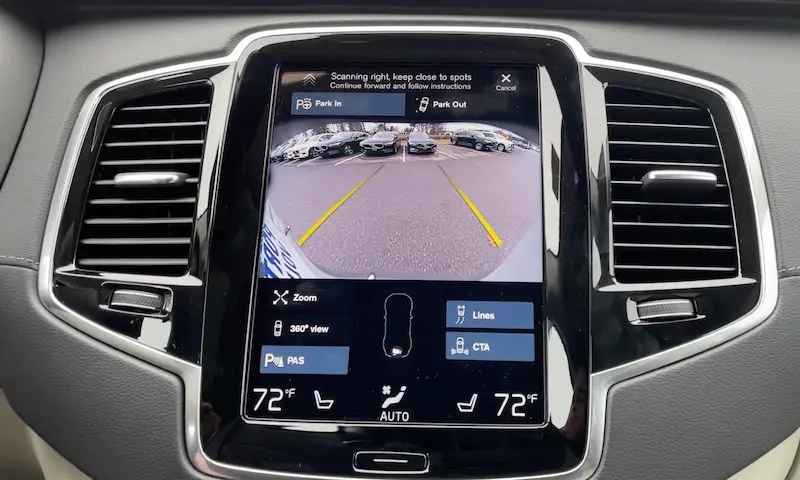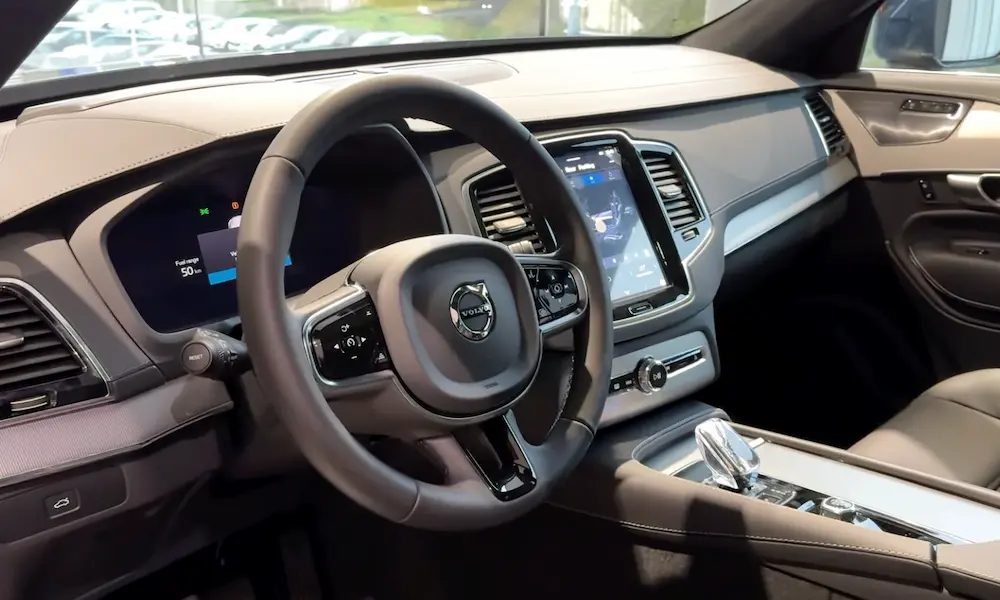Is your charging system warning light on, or have you got the charging failure service urgently?
A “Charging Failure Service Urgent” Warning message indicates a problem with your Volvo’s charging system. It includes malfunctions in the battery, alternator, wiring, and ECU.
When you get this warning light on your dashboard, you typically have 35- 60 minutes before the car stalls or goes off.
This article will examine why your car displays the Charging Failure Service Urgent. We will discuss some causes and remedies to fix the warning message. Let’s dive in!
What does the “Charging Failure: Service Urgent” Mean?
The charging system consists of the alternator, wiring, batteries, and ECU, all of which work together to keep the car charging after ignition.
Whenever you get the error message or the warning light is triggered, it tells you your vehicle is running solely on battery power and will soon go off.
If left unattended, the battery will soon run dead, which is disastrous for the battery’s health.
The primary cause of the error message is the alternator. A lot can go wrong with the alternator, ranging from a broken voltage regulator, loose mounting bolts, or broken diodes. The alternator isn’t the only cause; more will be discussed in the subsequent paragraph.
Why are you seeing the “Charging Failure: Service Urgent” Warning?
Several reasons related to the charging system may cause the warning on your cluster display. Below are the most likely causes:
1. Bad alternator
The alternator is responsible for recharging the battery when the engine comes on. A faulty alternator means the battery cannot charge properly. A lot of things can cause the alternator not to charge well. It includes insufficient power generation due to a bad battery, faulty voltage regulator, and damaged wiring.
2. Worn-out commutator
The commutator is found within the alternator and plays a vital role in converting electrical energy in the car. If the commutator becomes worn out, it may result in poor electrical contact and affect the performance of the alternator and the charging system. Again, this is still part of the alternator, which could indirectly cause the error.
3. Defective battery
Batteries are the primary source of electric charge. If the battery is defective, it may produce a low or irregular voltage that may be difficult for the alternator to recharge. Sulfation buildup on the terminals may also be an issue with the battery, triggering the error message.
4. Defective Alternator Belt
The alternator belt drives the alternator to generate more chary for the car’s battery. Over time, it may become worn-out, old, or loose, affecting the proper functioning of the belt. You want to ensure you inspect the belt’s condition to avoid slippage. Also, check the tensioner condition.
5. ECU or Software Glitches
Occasionally, your vehicle may need to have its software updated and recalibrated. If delayed, the ECU may act up, glitch, or trigger false warnings, including the “charging failure service urgent.” Although rear, you should make sure the ECU is always up-to-date.
How do you fix the Charging Failure Service Urgent Warning?
Don’t drive your car if you see the warning lights on your cluster display. You don’t want your car to go off in the middle of the highway or get stuck.
Here are some things you can do to resolve the Charging Failure Service urgent in your car:
1. Replace the alternator of your car:
2. Inspect and replace the drive belt
3. Check for wiring issues
4. Replace or Update the ECU
5. Replace the battery
6. Clean corrosion on the battery terminals
7. Reduce load on the accessories
8. Test and verify fixes
Performing a physical inspection and identifying the trigger’s cause will help fix the warning message.
How do you test the Alternator of your car?
Testing the condition of your car’s alternator is crucial in diagnosing the “Charging Failure Service Urgent.” Here is how to test the condition of your Alternator:
1. Prepare your tools: You will need a multimeter, safety glove, and goggles
2. Ensure your engine is turned off and cooled for at least 20 minutes
3. Locate the alternator: The alternator is located near the front part of the engine and is connected to the engine block via a belt.
4. Set up your multimeter: The multimeter should be set to voltage or DC
5. Proceed to check the battery voltage: First, check the battery voltage when the engine is off. Connect the multimeter red probe to the positive terminal and the black to the negative terminal. The recommended reading should be 12.6 volts.
6. Start the engine and let it idle for a few minutes. Perform the same test while the engine is on. The appropriate reading should be 13.5-14.5.
7. Measure the voltage of the alternator with the multimeter. Reading should be between 13.5V and 14.5V.
8. Check for signs or burning smell around the alternator
9. The alternator and battery are good if there is no smell and the readings are within specifications. Else, they will need to be repaired or replaced.
Can you drive with a Charging Failure Service Urgent?
We do not recommend driving with a “Charging Failure Service Urgent warning light.” As explained above, the warning indicates that the car charging system is bad and your battery isn’t getting the necessary juice. If unresolved, the battery will die. If there is enough juice in the car, we recommend you drive to a technician or a safe place and have someone toll the vehicle.
Conclusion
The Charging Failure: Service Urgent” warning message indicates that something has gone wrong with your car charging system. In this article, we have identified the meaning of this error, causes fixes, and how to test your battery and alternator. If you still face problems fixing this warning, please contact a professional mechanic for help.

